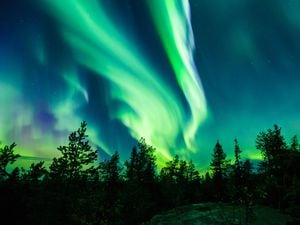Planners give go-ahead to 83 new homes near Oswestry's ancient hill fort
Councillors have voted overwhelmingly for a controversial development of 83 homes in the "landscape setting" of Oswestry's Iron Age hillfort.

Despite a flurry of last-minute objections from archaeology champions and countryside campaigners, Shropshire Council decided that the benefits of having new homes off Whittington Road on the edge of the town outweighed the harm it would do.
Council planner Philip Mullineux told Friday's meeting of the Northern Planning Committee that none of the official consultees, including Historic England and the council's own conservation team, had raised objections.
But the committee heard that the definition of "less than substantial harm" was disputed by outside experts in archaeology and who thought harm was "still harm" to an important historical site.
Dr Rachel Pope, vice president of the Prehistoric Society, spoke at the meeting on behalf of the society and the Council for British Archaeology.
She said: “Less than substantial harm is still harm, under which the National Planning Policy Framework gives a clear steer towards conservation.”
The committee was told that objections put forward although large in number did not change the officers' assessment of the planning issues.
"No further issues were raised in the updates," said Mr Mullineux.
The site has been earmarked for development and the committee was told that 83 homes would be of low density, with good landscaping, and a viewing platform to enable people to have a good view of the hill fort.
Most of the housing will be two-storey and eight of them would be designated as affordable.
A representative of the applicant, Cameron Homes, told the committee at its meeting at Shirehall, in Shrewsbury, that he agreed with council officials who had recommended approving the plan.
Stuart Wells, agent for the applicant, Cameron Homes, pointed out to the committee that when the previous plans for the site were refused, the proximity of the hillfort was not one of the reasons.
He said the developer had addressed the five previous reasons for refusal, which included environmental, highways, drainage and noise concerns.
He said the plan complies with policies, and have the benefit of bringing "much needed homes" to the area, including eight affordable properties, and would provide a "viewing platform" to see the site.
The committee was told that the plans have faced long term opposition.
Councillor Roger Evans said though that it would cause harm to the area and he added that eight out of 83 affordable homes is a "derisory amount."
"Ten per cent of 83 is 8.3 so they could have gone up to nine," he said.
"To me it will harm the area. Once built on we have lost it."
Councillor Evans voted against the plan but he was outvoted by nine to one to agree with the officers' recommendation and approve the plans.
Councillor Steve Charmley said: “In my view, I am more than happy with this. It’s a nicely laid out development of low density, with a lot of screening around it which is what we all want.”
Councillor Nat Green said it was a difficult decision, with the possibility of either an appeal from the applicant or a judicial review from the campaigners hanging over the council depending on which way the committee went.
Before the meeting a spokesperson for local campaign group, Hands Off Old Oswestry Hillfort (HOOOH), warned that such a decision would "seal the fate of one of Shropshire’s and Britain’s greatest archaeological landmarks."
Local objectors include Oswestry Town Council, North Shropshire MP Helen Morgan, Oswestry & Border Archaeology & History Group, Cambrian Heritage Railways Ltd, and Oswestry and District Civic Society.
Objections have also come from The Prehistoric Society, Council for British Archaeology, RESCUE (The British Archaeological Trust), Historic Buildings and Places.
Additionally, members of the public submitted 128 letters against and 12,000 objectors signed a petition during the long-standing campaign to protect the setting of the site acclaimed as the ‘Stonehenge of the Iron Age’.




